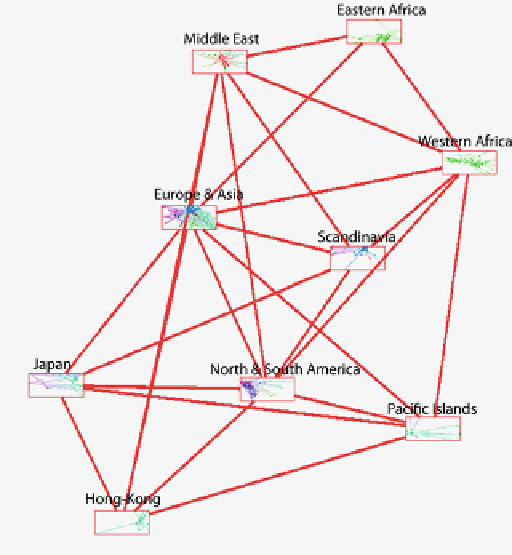Information Technology Reference
In-Depth Information
Fig. 9.5
Clustering of worldwide air traffic using betweenness centrality
Clustering using Betweenness Centrality also emphasizes the geographical
proximity between cities but introduces three main changes:
1. Some continents are included in the same clusters, such as North and South
America, Europe and Asia;
2. These continental groups also include non-continental cities. For example,
Jerusalem and Aqaba are included in the Scandinavian group;
3. Other locally centered clusters emerge, such as Hong Kong or Japan (Fig.
9.5
).
Clustering using the strength index was implemented via a multi-level approach,
fragmenting each cluster into several denser clusters that were subsequently frag-
mented until the individual nodes were reached (
Amieletal.
,
2005
). At the highest
level of world air traffic (Fig.
9.6
), the network is organized around a central
component called the “principal worldwide hubs”. A star topology spreads around
this component, emphasizing the role of the intercontinental hubs. Small cores
are strongly inter-connected at the same level as this central component. Among
these cores, sub-networks with continental logic appear, as is the case with Europe
and Asia. This general organization can be specified by descending the levels in
the graph. Applying the decomposition algorithm to each component iteratively
isolates the levels from the connected network, starting at the most general level
and proceeding to the encased sub-graphs of levels 2, 3, etc.

Search WWH ::

Custom Search